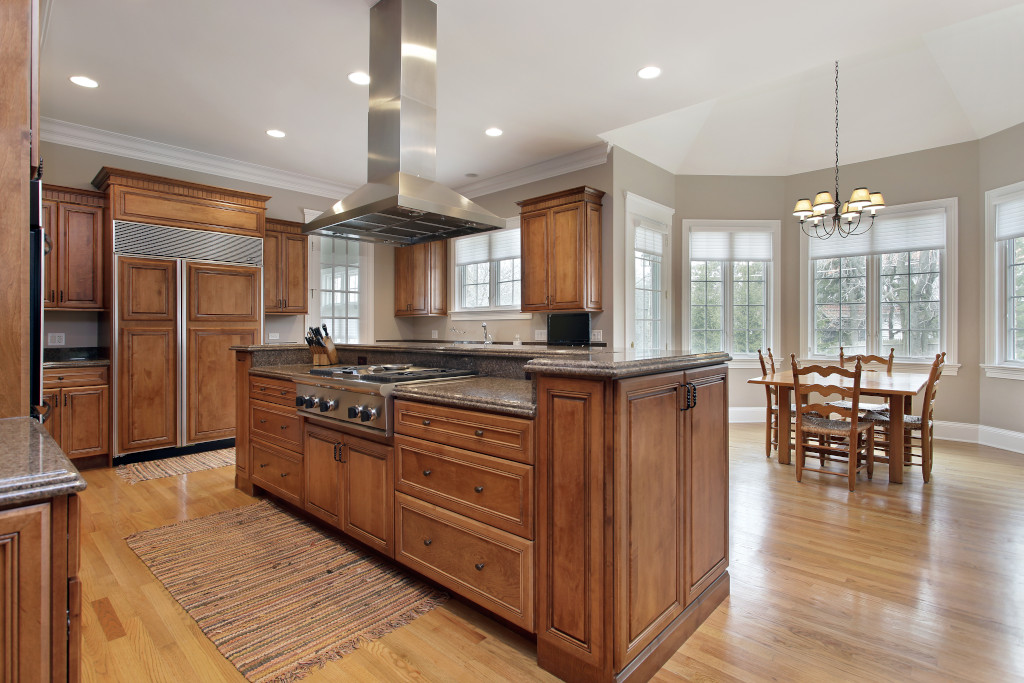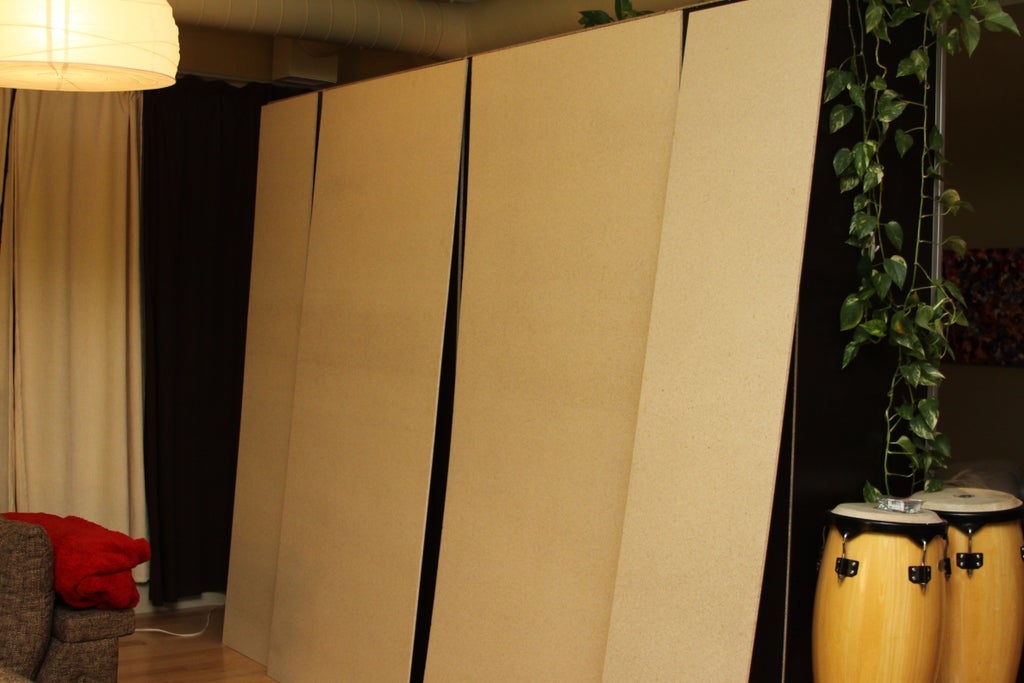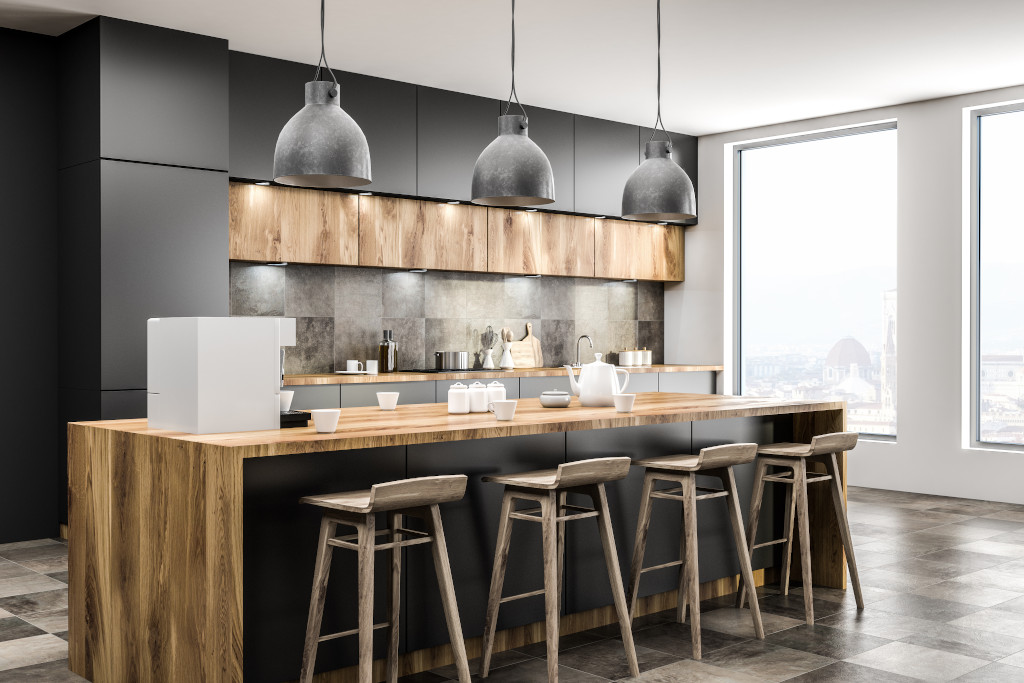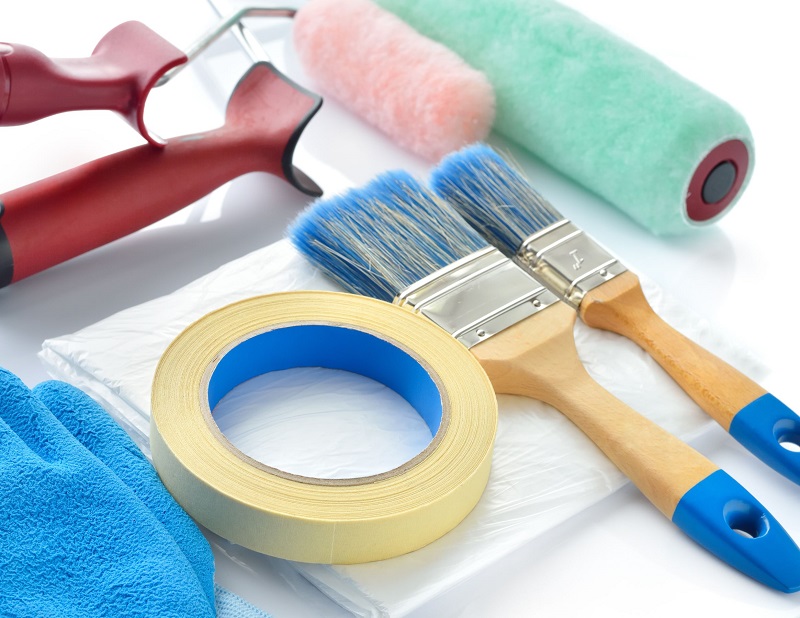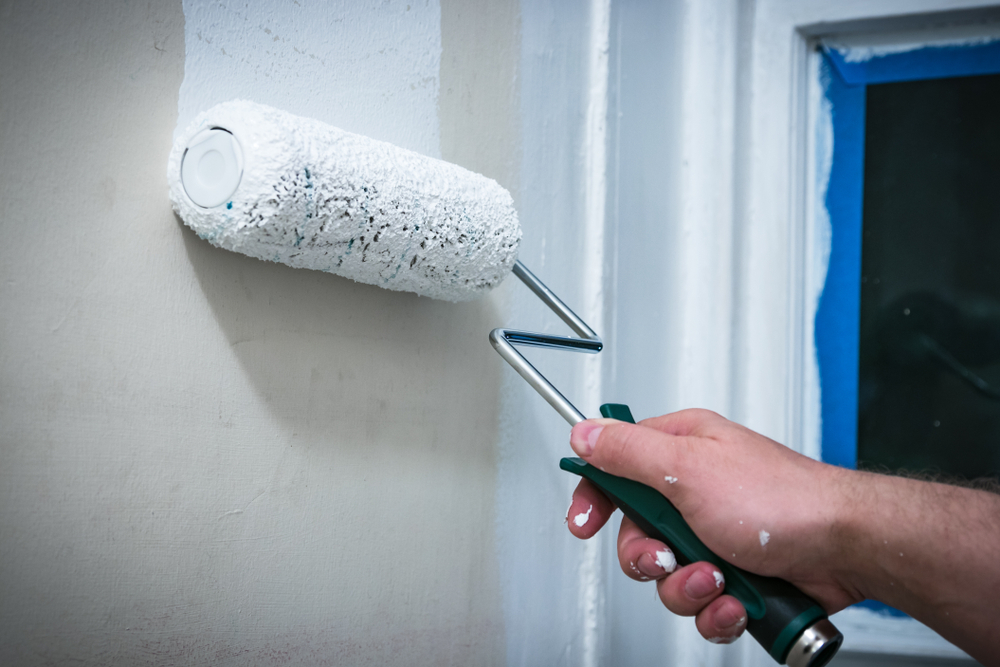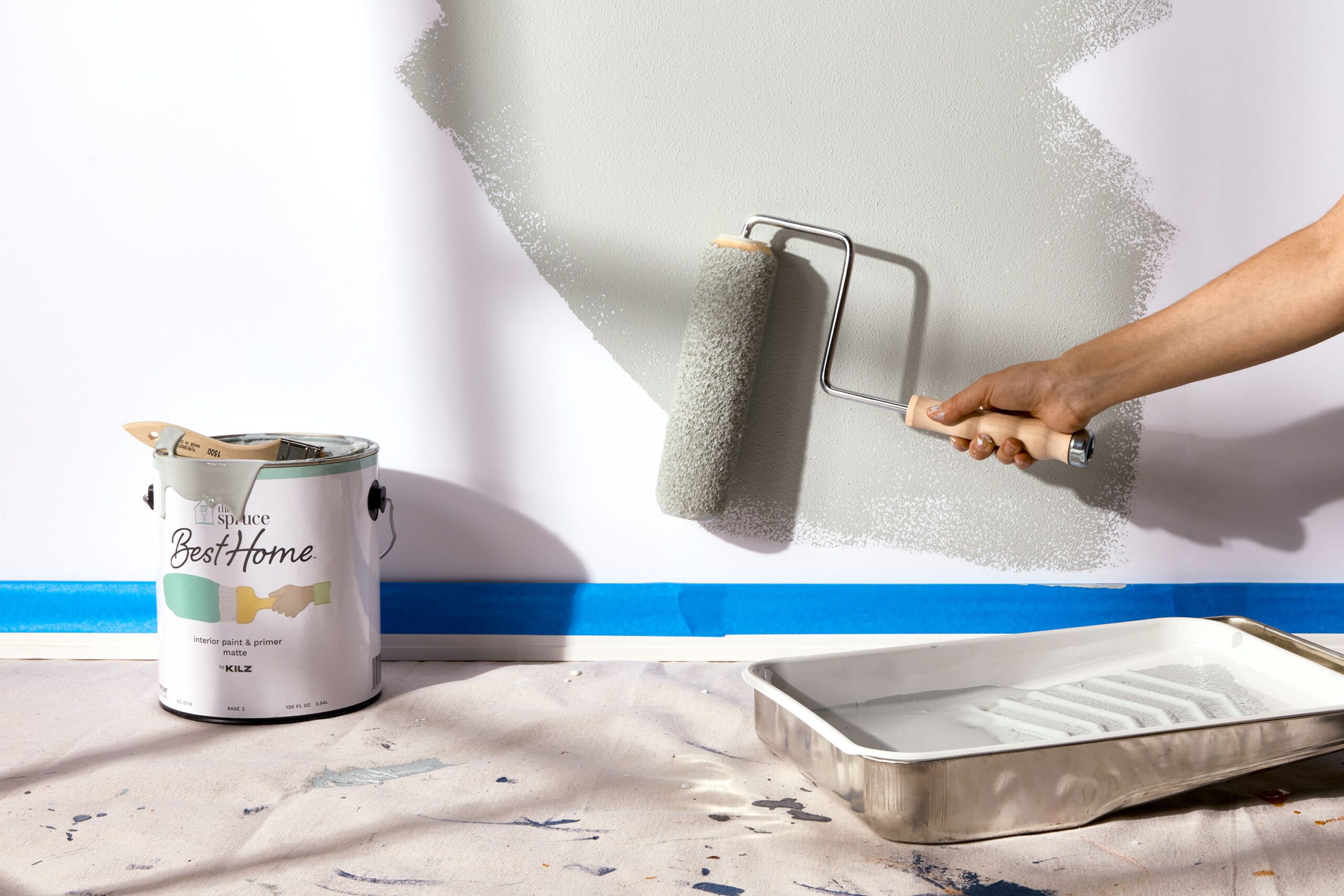Even though neutral colors are very popular, many homeowners still find it hard to choose the right color palette. We all know that choosing neutral paint colors for your home is a big deal. It can be overwhelming and time-consuming as well.
Another thing that makes this even harder is that neutral colors seem boring and dull making many people hesitant to use them. But you can still add a hint of color into the mix to make it more interesting.
There are many ways to incorporate a bit of color into your neutral room or space, and we will show you just that in this article. We hope these ideas inspire and encourage you to take an adventurous plunge into the world of neutral color palettes.
1. Black and Bright White Neutral
When it comes to neutral color palettes, black and white seem to always take the lead. It is a classic combination that has been around for centuries. It instantly adds sophistication to any space regardless of its minimal, country, or urban chic.

Image caption: https://www.mercurynews.com/
Incorporate color by painting your front door in bright paint color or choosing colorful art and accessories. Even changing the hardware of your cabinets will also make a big difference. A pop of color is something that can be very daring, but it is also great for a bold statement.
2. Navy and Sand Neutral
Another popular combination among homeowners is navy blue and sand. This paint color combo brings together the traditional look of beach houses with the sophistication of Navy Officers. A mix of light blue cabinets or furniture paired with dark walls will give your space a unique look.
3. Rust and Off-white Neutral
A color palette that instantly brings out the French country charm is Rust and White. You can use either of those colors as the dominant color in your room or mix them up. Either way, it will make a bold statement without being too flashy. If you are afraid of using dark neutrals in your home, choose light or bright colors for the accents.
4. Pink and Taupe Neutral
This is one of my favorite combos. It might be a little girly, but it can be used for any type of space. Pink is very versatile, and you don’t have to limit it to just girls’ rooms. You can use it as a highlight paint color in your living room or hallway.
Taupe is also an amazing neutral color palette because of its warmth and earthiness. Combined with pale pink, it gives the space a luxurious flair.
5. Gray and Yellow Neutral
Gray is one of the most popular neutrals today. It can be tricky to use on its own, but when paired with yellow it will instantly bring life into the space. This color combo is very cheerful and bright. Just make sure that you use a pale yellow so the room doesn’t look too busy or cluttered.
6. Red Neutral
Red is a versatile color that can work in any space. It can be used as the main paint color or just as an accent, depending on the type of room you are working in. You don’t have to limit red to kitchens and bathrooms because it will look amazing in your master bedroom as well. Or if you prefer the industrial look, use it on your walls.

Image caption: https://hgtvhome.sndimg.com/
7. Blue and Yellow Neutral
Although this color combo might look unusual, it will work great with your furnishings and accessories. You can use blue as a neutral base and add yellow accents for contrast. Or you can do the opposite by choosing yellow as the main paint color and adding different shades of blue in your space.
8. Beige Neutral
Beige is one of the most underrated neutrals because it is always associated with being modest and plain. It might be boring, but you can dress it up by adding interesting textures and patterns. Plus there are endless ways to use this color in your home so you’ll surely get creative with it.
9. Brown Neutral
Brown is a great paint color to use on the floor where you can be more experimental with your color blocking scheme. You can use a different shade of brown for each room in your space. Add some bright accents and pops of color for contrast.
If you’re just learning how to paint a wall and wondering which colors to give a try, you’ll be surprised that beige works well on walls. But it can easily be overwhelmed by other bright colors. So, you must always understand how to use it properly so it doesn’t end up making your space look dull.
10. Green and Blue Neutral Color Scheme
Green is another paint color that can be tricky to use, but it looks gorgeous when paired with blue. You can have varying shades of these two colors in your space and they will still look amazing together. Keep a monochromatic look by having them both in the same intensity or have one as the dominant color while using the other for highlights.
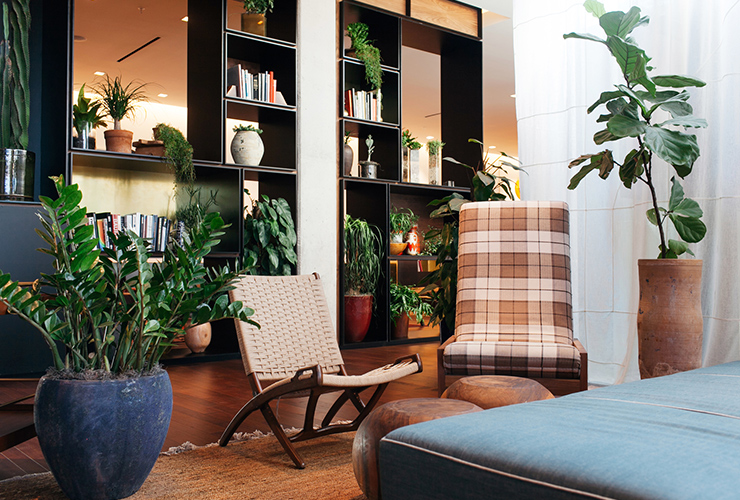
Image caption: https://www.shutterfly.com/
Use this neutral color palette for the exterior of your home so it doesn’t look too plain and dull. You can use any combination of these colors, but make sure you balance them out well to avoid clashing with each other. Remember that less is more when it comes to using bright or contrasting colors in large spaces.
11. Pure White
White is always a neutral palette and you don’t have to mix it with any other color to make it look great in your home. It is a clean color that can work with any design and style. Just keep in mind that it does show every single piece of dirt, so make sure you duster your home regularly.
If you like using white as the main accent color in your room, try to find pieces of furniture that have interesting details on them because plain white can be boring. A good example here will be blending kitchen paint colors with white cabinets. Textures, patterns, and details will add more character to your space without overwhelming it with too many colors.
12. Warm vs Cool Neutral Colors
White and gray are considered cool neutrals, while yellow, orange, red, and brown are warm neutral palette colors. You can always mix both warm and cool tones to add more depth to your decor. Just remember that you should never use all of the cool neutrals or all of the warm neutrals in your space because it can look a little too jarring.
While the color wheel shows which colors pair well with each other, a much more helpful tool is to find out how they fit into your personality. So if you feel overwhelmed by these combinations, ask yourself what you like and look for ways to incorporate it into your home so you can avoid an option paralysis.
13. Greige Paint Color
Greige color is a combination of gray and beige and it has an equal balance of both. This neutral color palette is perfect if you like the serene look of white, but also want to add enough warmth into your space. It can work on walls or as flooring and is a great choice for people who don’t know which color scheme they should use in their home.
14. Pale Pink and Gray in the Bedroom
A monochromatic combination of pale pink and cool gray can give you a modern, luxurious, and sophisticated vibe that will make your bedroom look like it belongs to an adult. This paint color scheme works well on floors as well so you don’t have to limit yourself when decorating your bedroom.
The rosy pink adds warmth while the earthy tones of light gray balance it out. This color scheme can be used in living rooms, dining rooms, or bedrooms because the tints of pink will make you feel relaxed and calm.
15. Light Green and Brown
If you are a nature lover, then light green and brown is the perfect combination for you. This neutral palette color combo will make your home look cozy without being too overpowering. You can use these colors in any room of your house like the living room, bedroom, kitchen, or bathrooms.
16. Soft Gray and Tan
Soft gray and tan is another combination that will give you the perfect balance of warm and cool color. The yellowish tinge of tan will make the soft grays look more welcoming while also adding a tint of warmth into your space.
This neutral color palette is perfect for spaces where you want to relax or entertain guests like your living room or dining room. Just make sure to keep the design of your space as simple as possible so it won’t overwhelm you.
Tips to Use Neutral Color Palette in Your Home
Shades of the same color will make your room look more spacious. This is because different colors absorb and reflect natural light differently, so you can use this trick to create a larger illusion in small spaces.If you are using gray as your main neutral color palette, try mixing it with other tints like purple or blue for an even more modern look. Just make sure to keep these colors in the same family so you can avoid clashing.Incorporate patterns into your space as long as they are related to each other. You can even use a variety of different designs if you want to go with bold color in your home decor. Just make sure that the designs have the same color or similar tones to avoid an overly complicated look.
FAQ About Neutral Color Palette
What are the four neutral colors?
The four main neutral paint colors are white, black, gray, and brown. These colors are also called earth tones because they are like the colors you will find in nature. You can also mix and match these perfect neutral colors to create a more interesting look for your home.
What is the best neutral color?
The best neutral color palette is the one that speaks to you. If you love dark hues, then black might be perfect for you. If you like the warmth of brown, then try out beige. If you feel neutral colors are too bland for your home, then add a little color into the mix with pale pink or turquoise. Just make sure that you are comfortable with it before adding it to your space.
Which other colors go well with neutrals?
If you want to create a harmonious look for your neutral color palette, then add lighter versions of these colors like pale pink and light blue. You can also play around with different shades so it won’t be too boring.
Final Thought on Neutral Color Palette
The secret to pulling off any color combination is not to be afraid of using a little bit of bold and daring colors. Don’t let anyone tell you that you can only use neutral colors because it is very limiting. If this is the look you are going for, then so be it! But if you want your space to be a little more exciting, then add at least one pop of color.
As you can see, you don’t have to limit yourself when it comes to neutral colors. You can always find ways on how to incorporate other colors in your space. Just remember this rule of thumb: the trick is to start with the dominant color and build the other colors around it.
The post Neutral Color Palette Ideas for Every Room appeared first on Kitchen Infinity.

